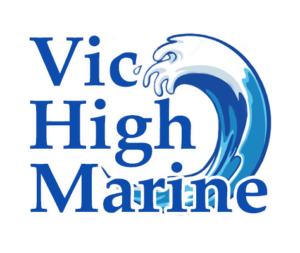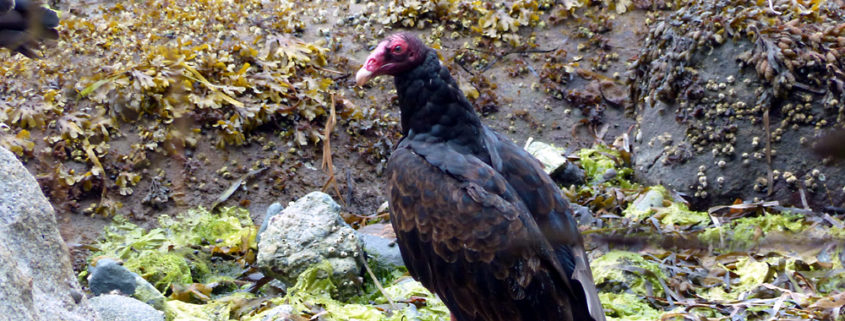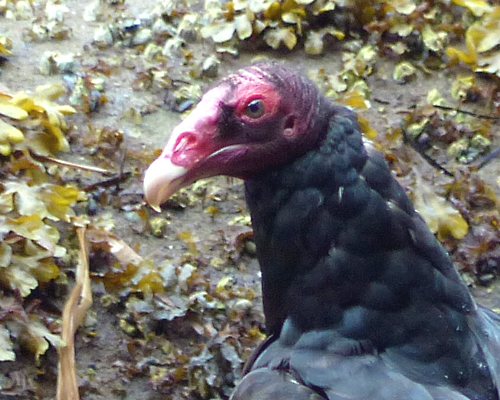Turkey Vulture
Scientific Name: Cathartes aura
Author: Graham Benneyworth
Size Range: Length: 62-81cm, Wingspan: 160-183cm
Habitat & Distribution:
Turkey Vultures prefer drier areas at lower elevations, and can be found within the interior of BC down to the shore line along the coast. They tend to breed in either remote, undisturbed rocky areas, or closed canopy forests, at elevations of 1000 metres or lower. They can be found in a wide range through the Americas; their norther observation limit is in southern BC, with the rest of their range stretching down through the pacific coast of the US and continuing down through Central and South America. In BC they usually can be seen around the southern part of the province, such as the Okanagan, Fraser valley systems, Vancouver Island and the Gulf Islands. In the interior they can be found all around the river systems, including the Thompson, Nicola, Columbia, Kootenay and Lillooet rivers.
Identifying features: Feeding Habits Vultures are scavengers and their most common food is carrion. They use their sense of vision and extraordinary sense of smell to locate food, even in dense wooded areas and forests. They prefer to eat already-deceased herbivores, but the vultures will also hunt reptiles, fish and small birds. The olfactory system of the Cathartes aura is very advanced when compared to other avian species, being able to sniff out prey from up to a mile away. They also have very nice table manners, and will wait their turn to eat, giving courtesy to other birds and animals. Predators While having few natural predators, being in nature the vultures would have a few, these being other large predatory birds such as; Great Horned Owls, Red Tailed Hawks, Golden & Bald Eagles, while mammals such as opossums & raccoons prey on the nests and nestlings of the vultures. Non-natural threats include lead poisoning from lead pellets, ingested by eating animals killed by lead shot, and the obvious deforestation in popular breeding areas, hunters and farmers who might kill them for a variety of reasons, or certain drugs that they might ingest from eating cattle who had the drugs in their own systems. Life cycle: Photos and video by D. Young References: Bird Atlas – Davidson, P.J.A. 2015. Turkey Vulture in Davidson, P.J.A., R.J. Cannings, A.R. Couturier, D. Lepage, and C.M. Di Corrado (eds.).The Atlas of the Breeding Birds of British Columbia, 2008-2012. Bird Studies Canada. Delta, B.C. http://www.birdatlas.bc.ca/accounts/speciesaccount.jsp?sp=TUVU&lang=en [25 Jan 2018] Brown, W.H. 1976. Winter population trends in black and turkey vultures. Amer. Birds 30:909-912. Coleman, J.S. and J.D. Fraser. 1987. Food habits of black and turkey vultures inPennsylvania and Maryland. J. Wildl. Manage. 51:733-739. 1989. Cornell Lab of Ornithology: All about birds – Turkey Vulture. (n.d.). Retrieved January 24, 2018, from https://www.allaboutbirds.org/guide/Turkey_Vulture/id Kaufman, K. (2016, March 01). Turkey Vulture. Retrieved January 24, 2018, from http://www.audubon.org/field-guide/bird/turkey-vulture?site=kern&nid=4116 Stewart, P.A. 1977. Migratory movements and mortality rate of turkey vultures. Bird- Banding 48:122-124. Wilbur, S.R. and J.A. Jackson. 1983. Vulture biology and management. Univ. Calif. Press, Berkeley, CA. Retrieved January 24, 2018 https://www.for.gov.bc.ca/tasb/legsregs/fpc/fpcguide/other/species/species-16.htm





Leave a Reply
Want to join the discussion?Feel free to contribute!